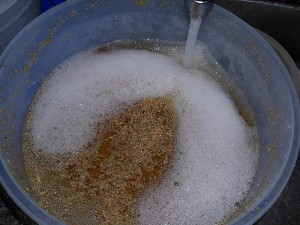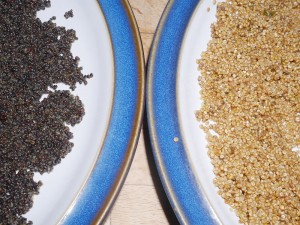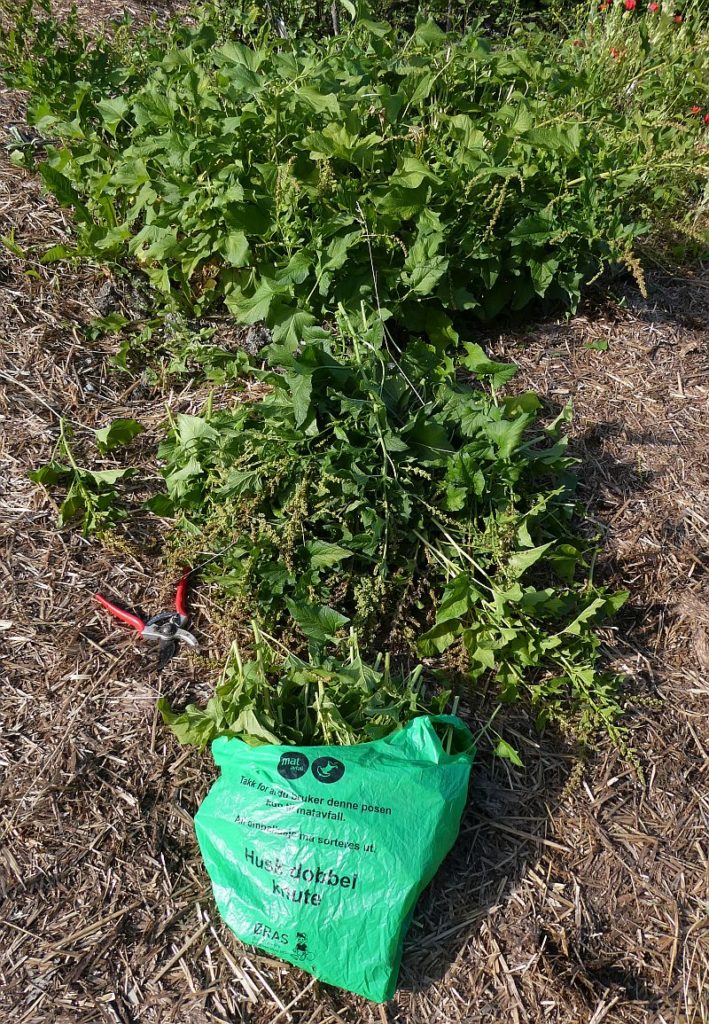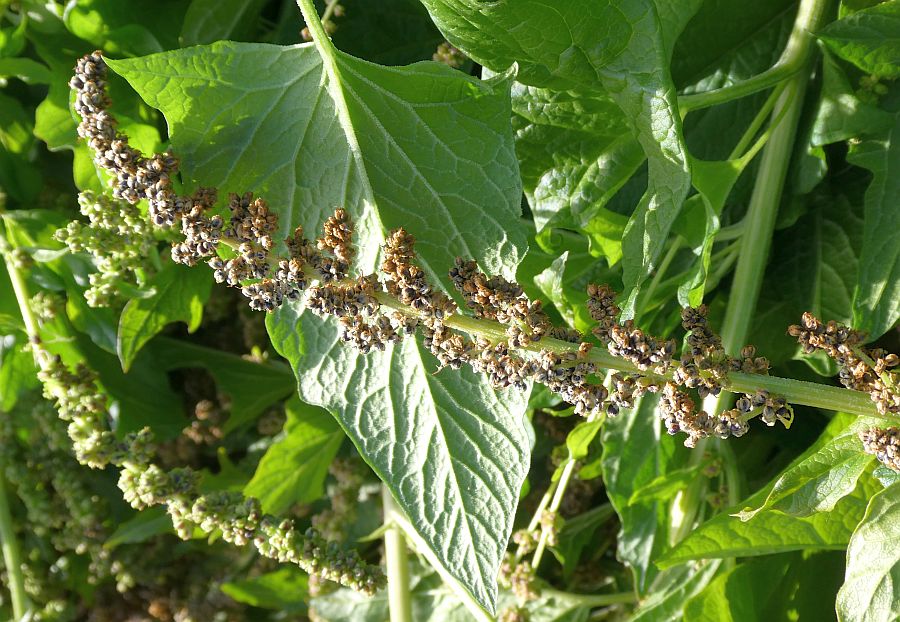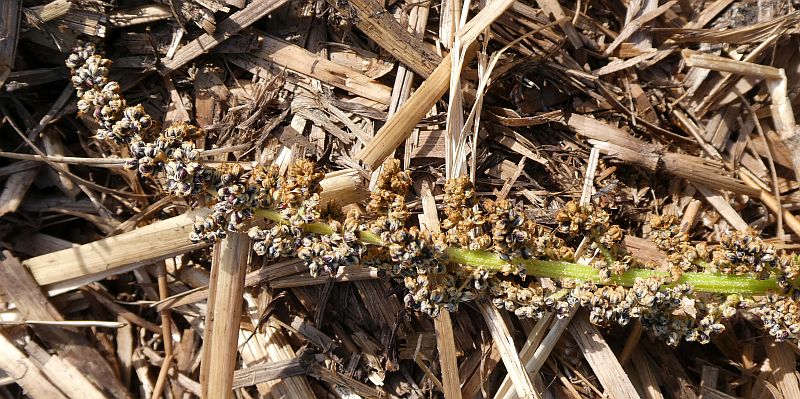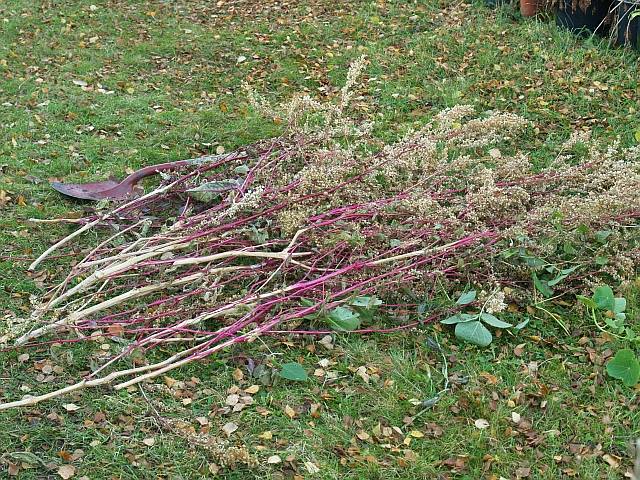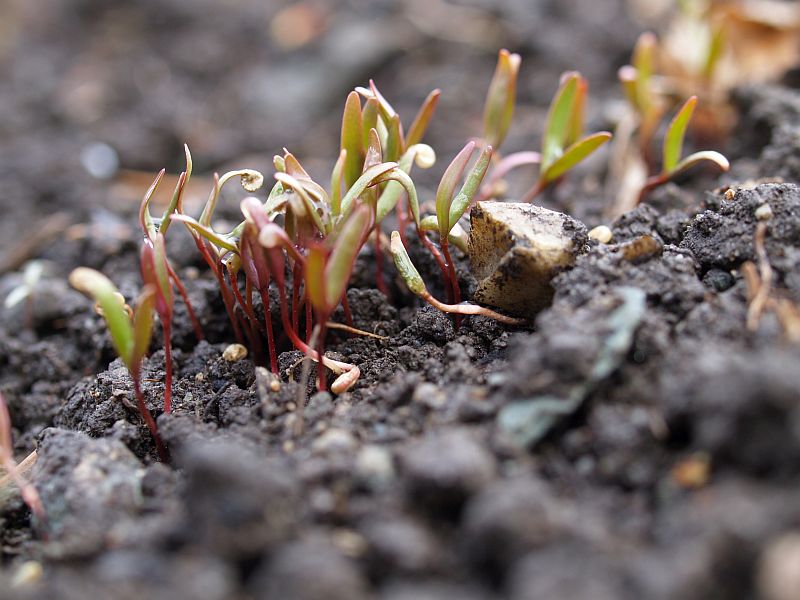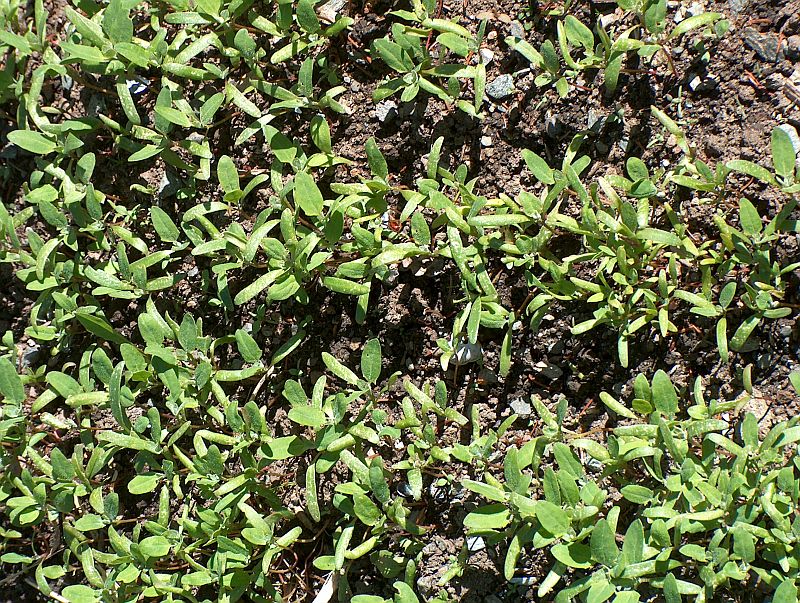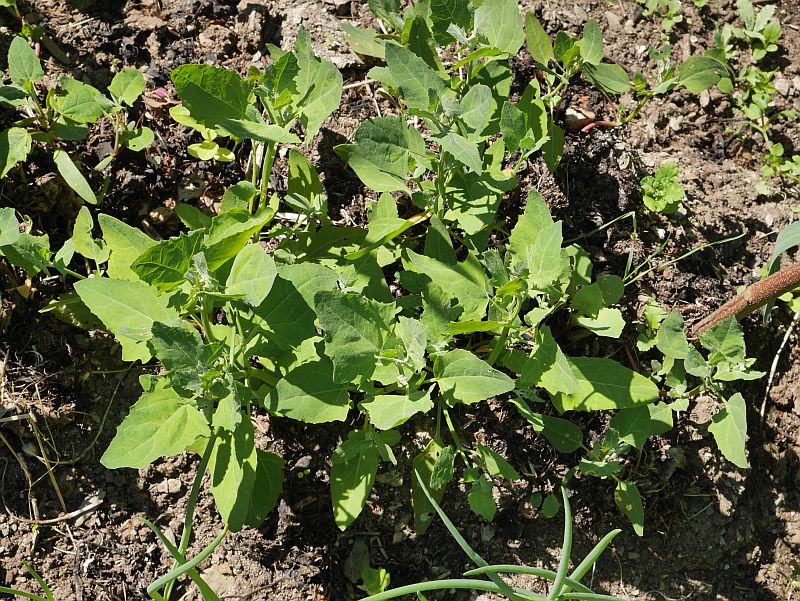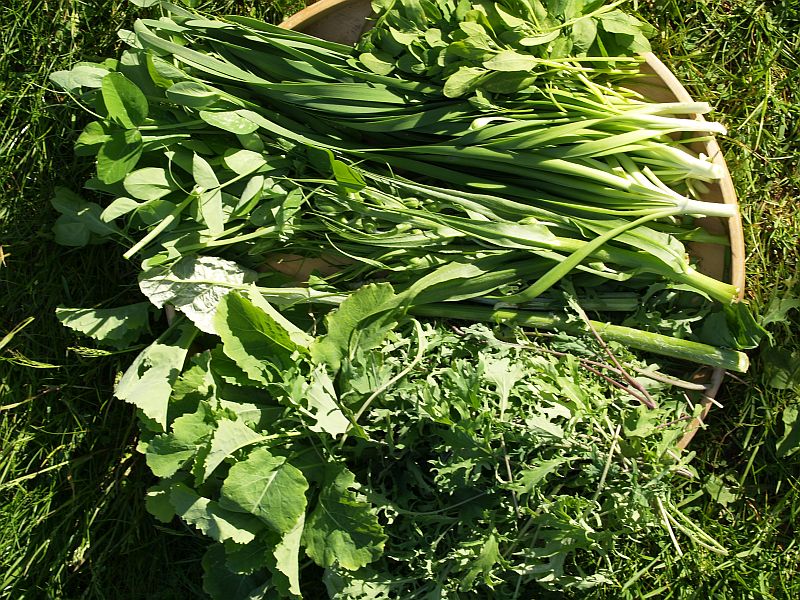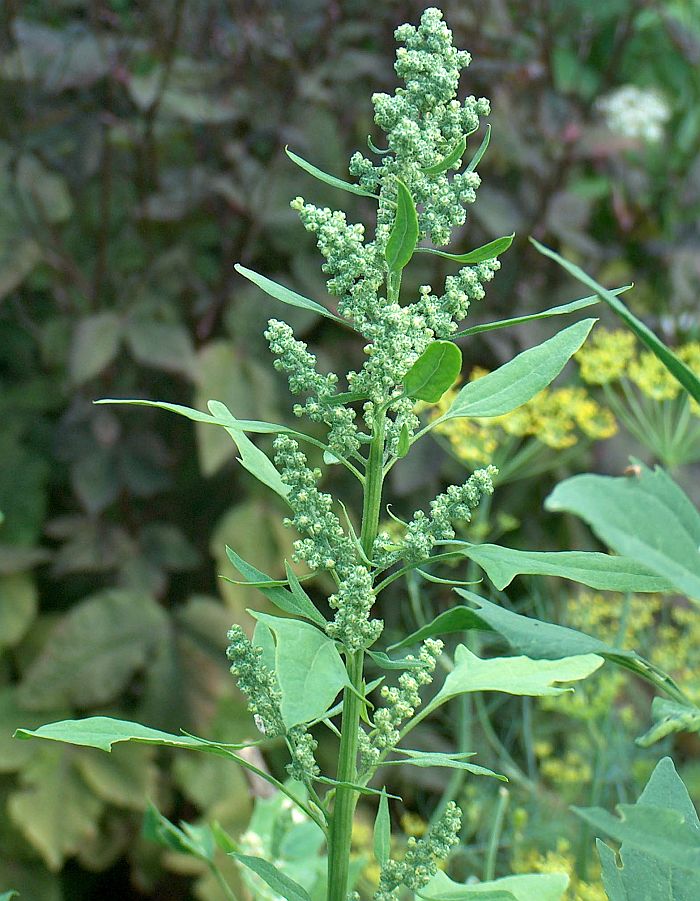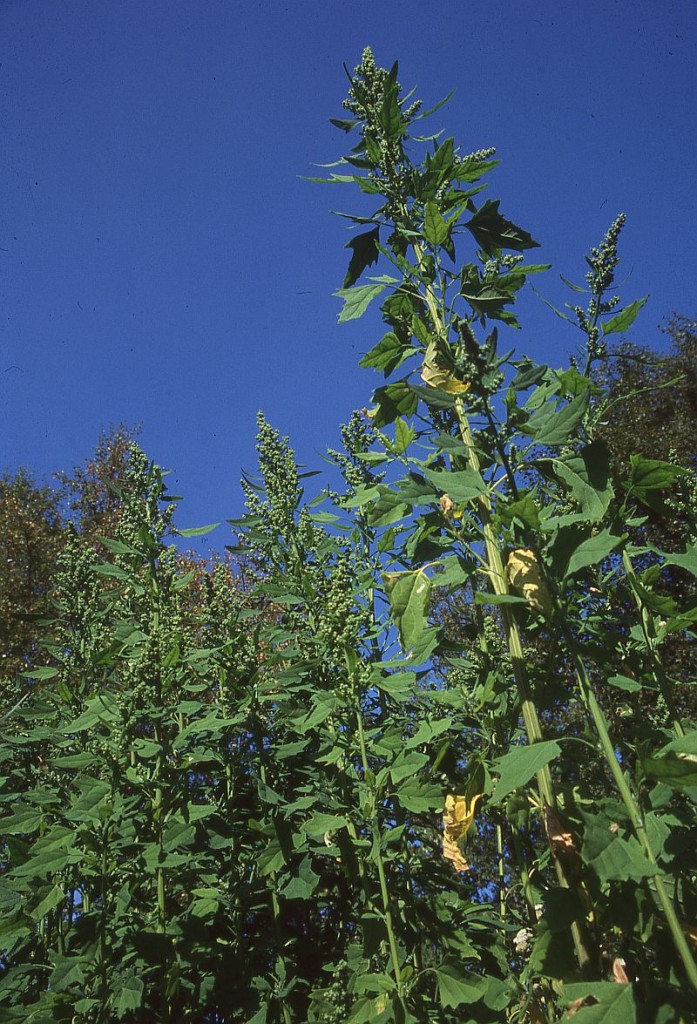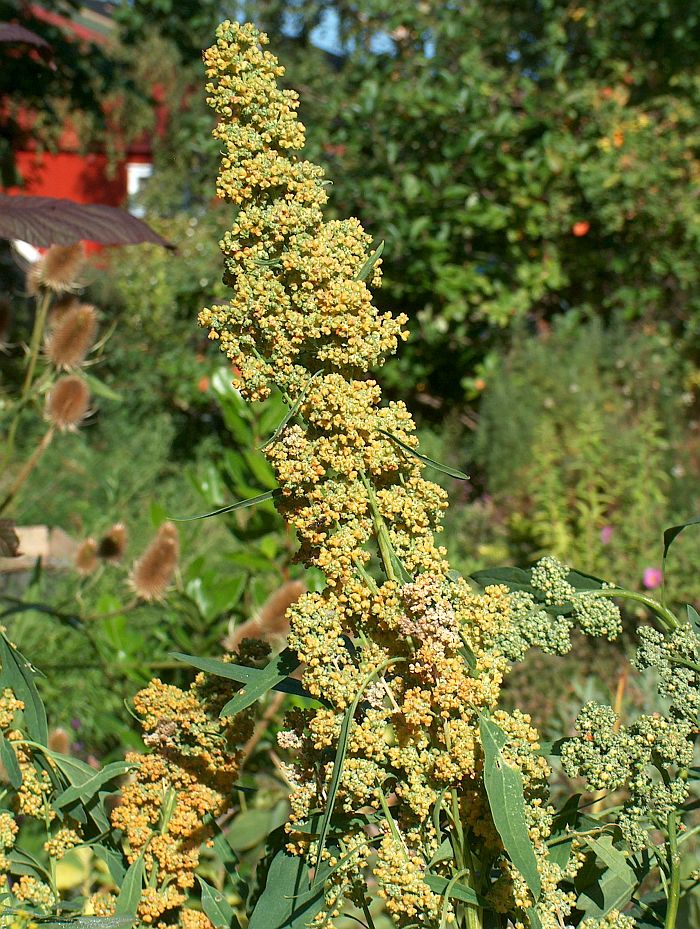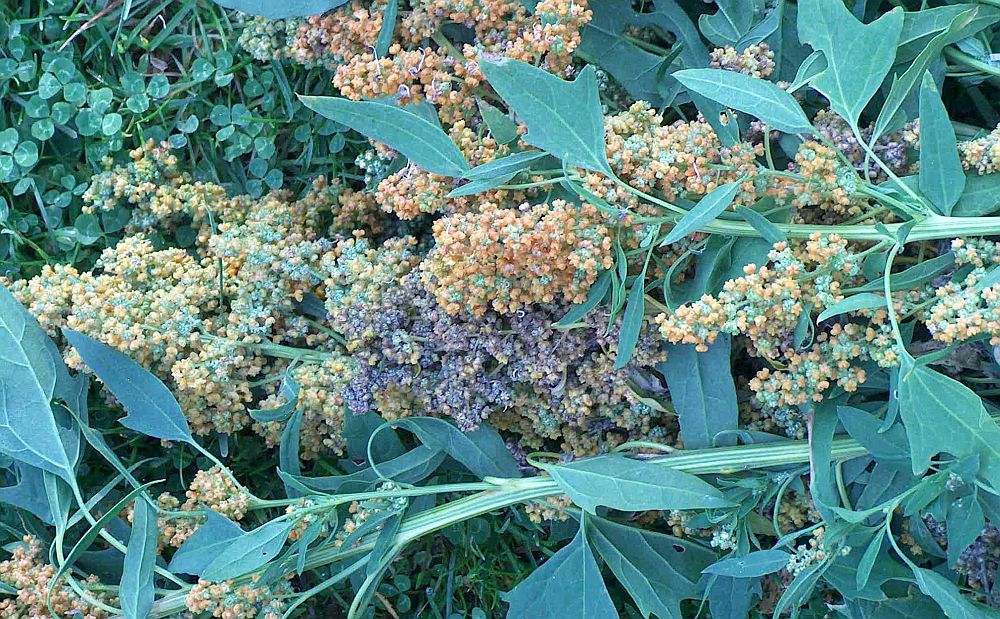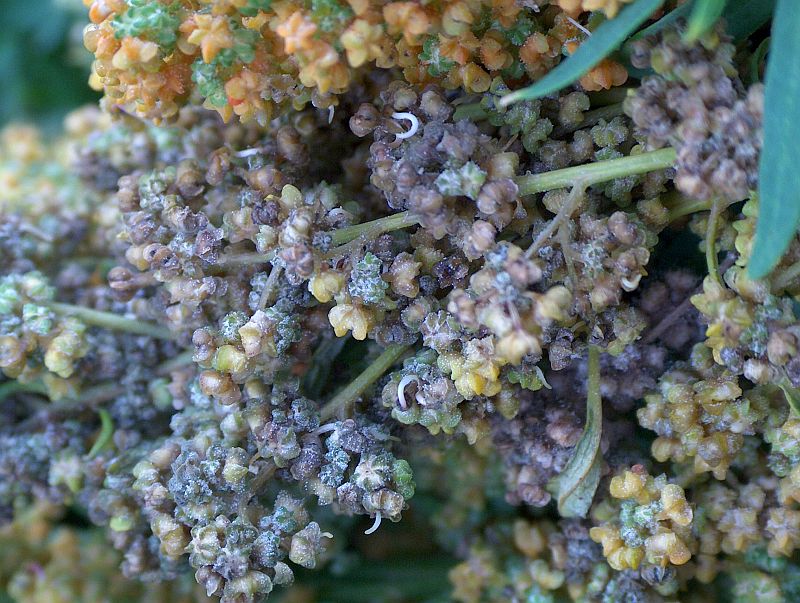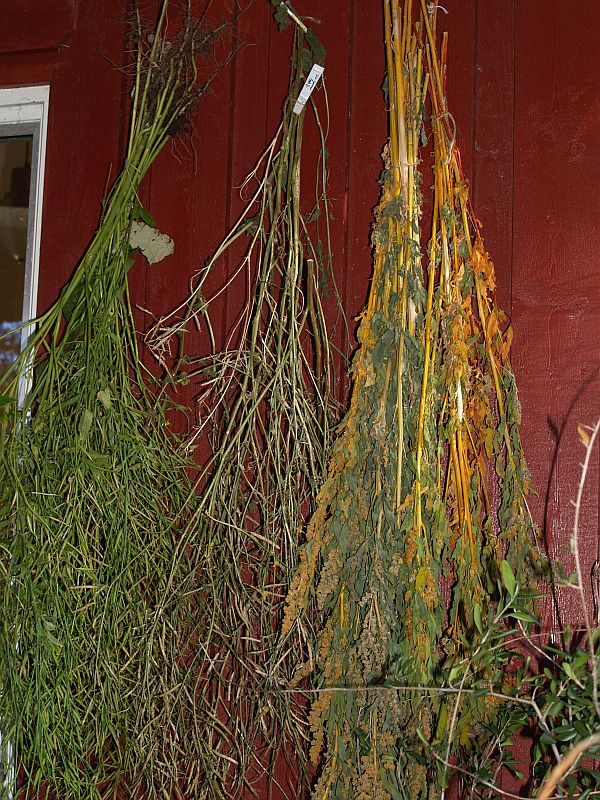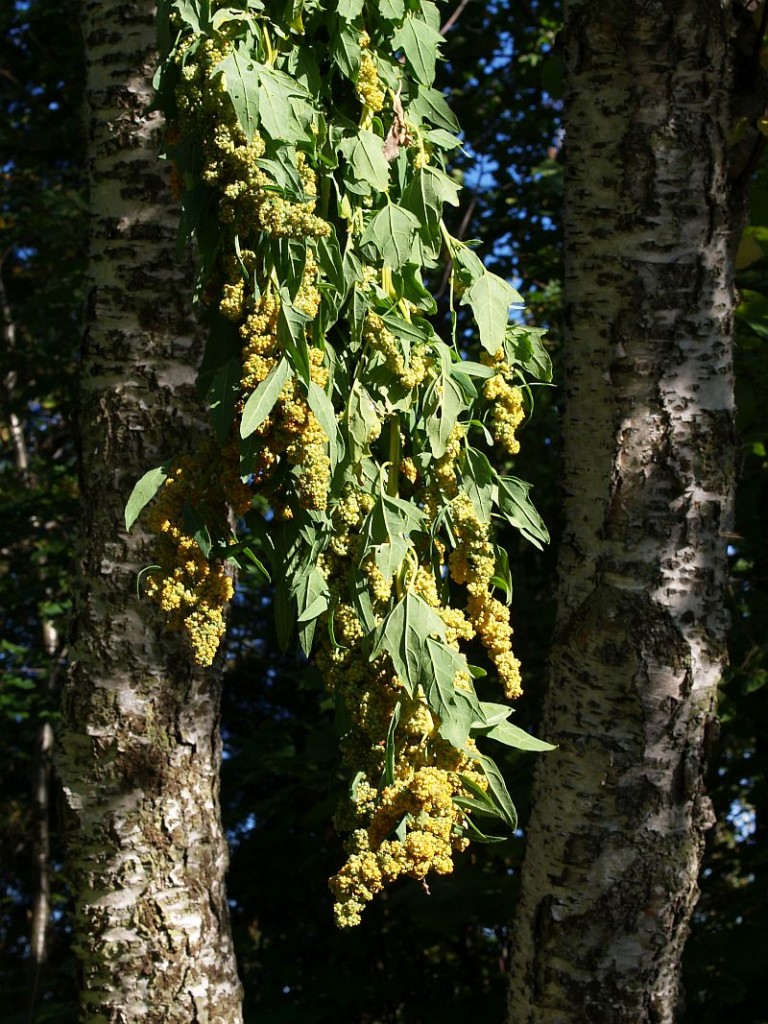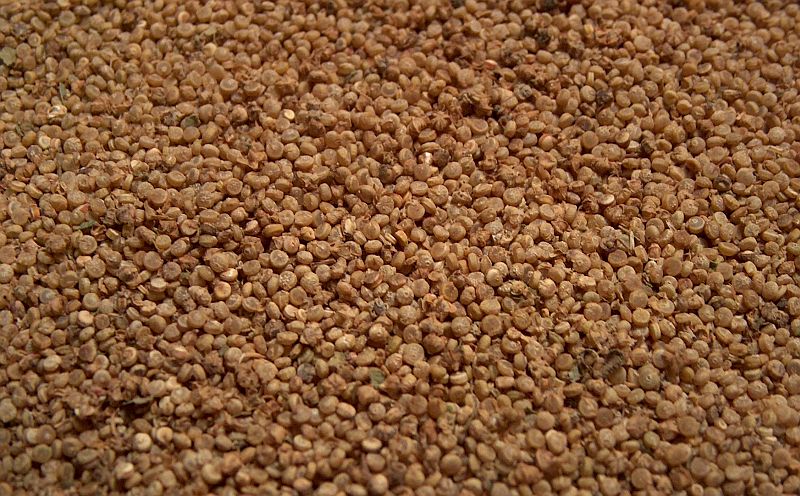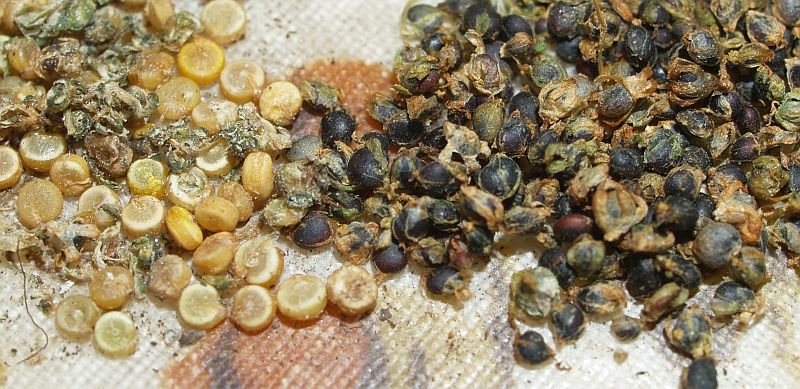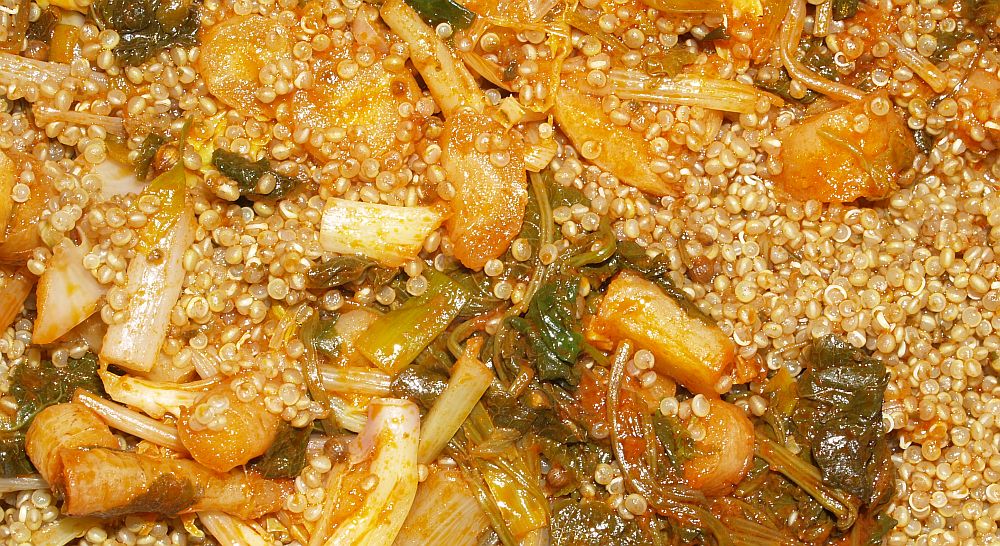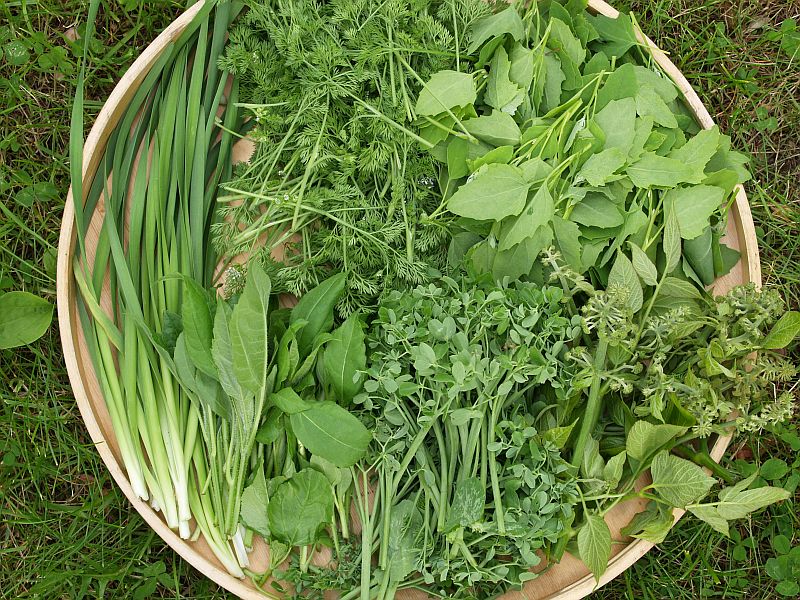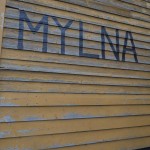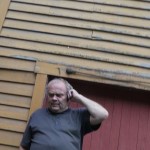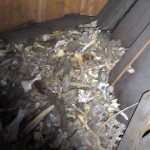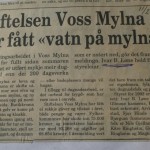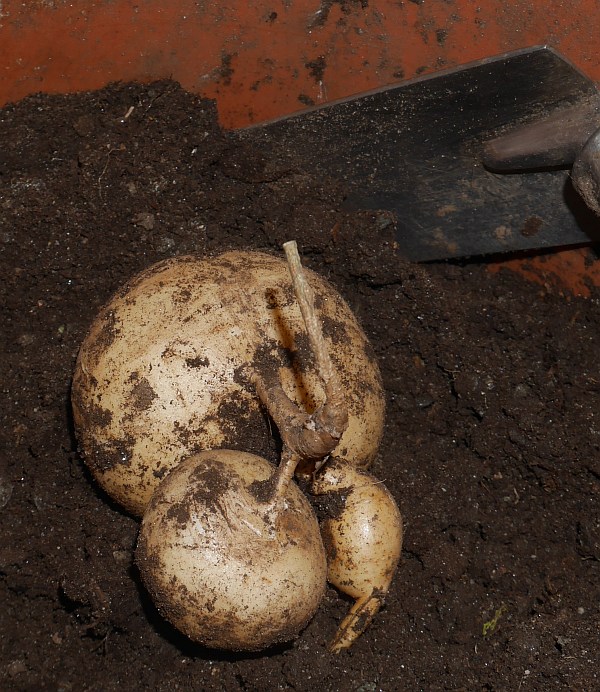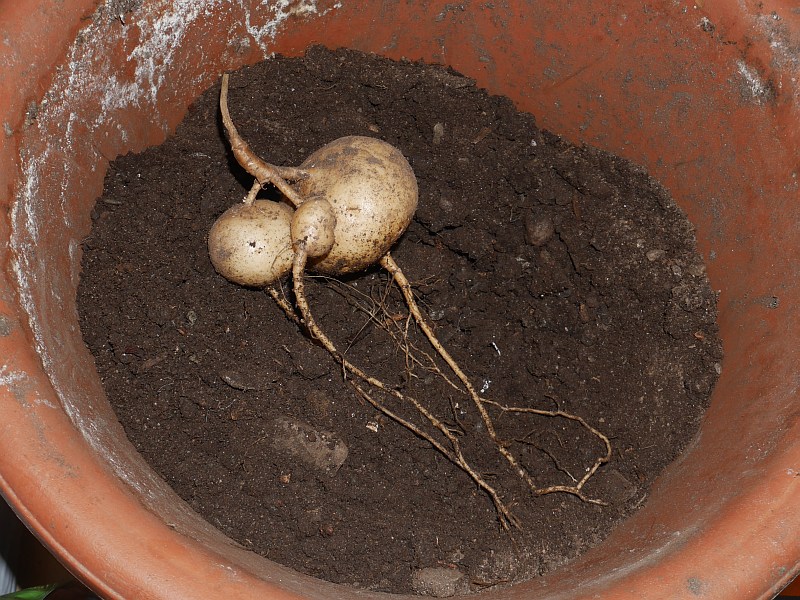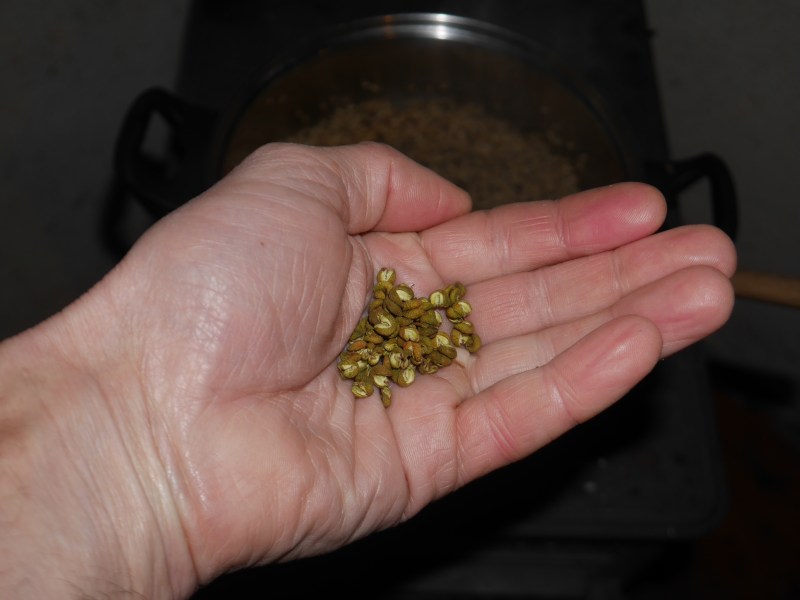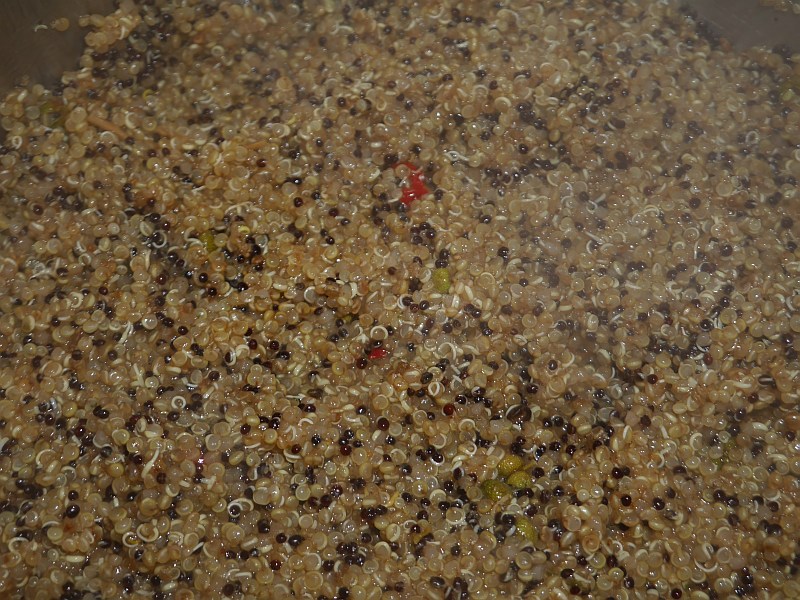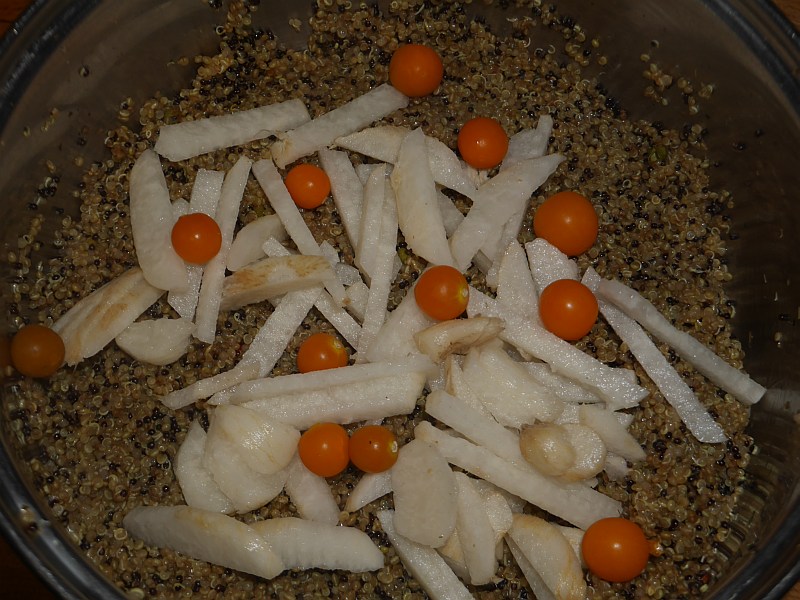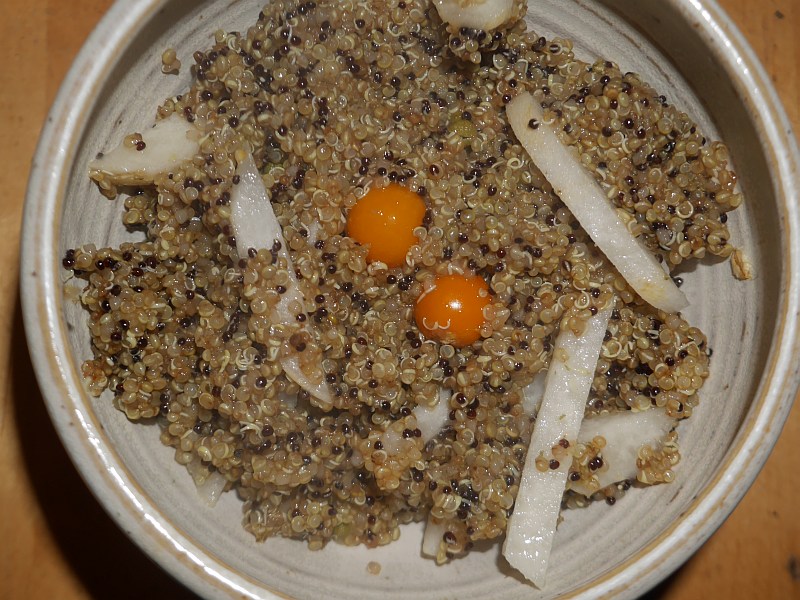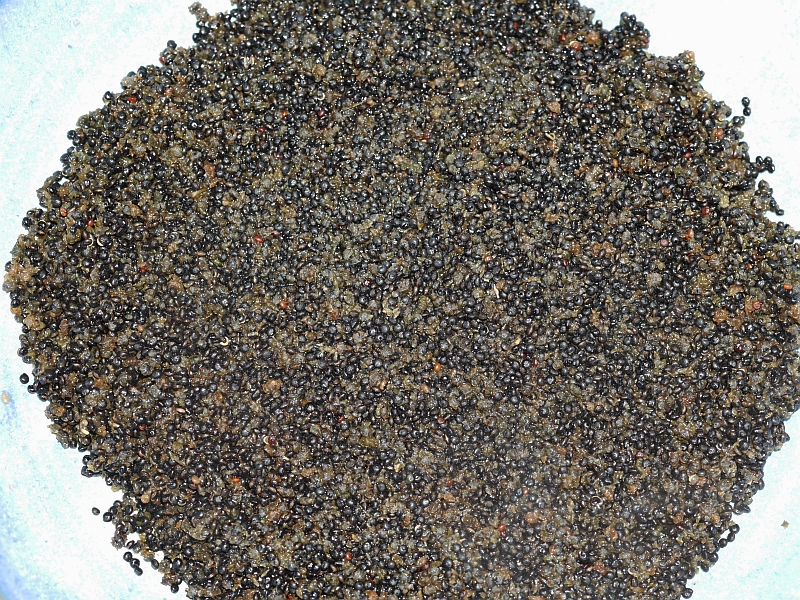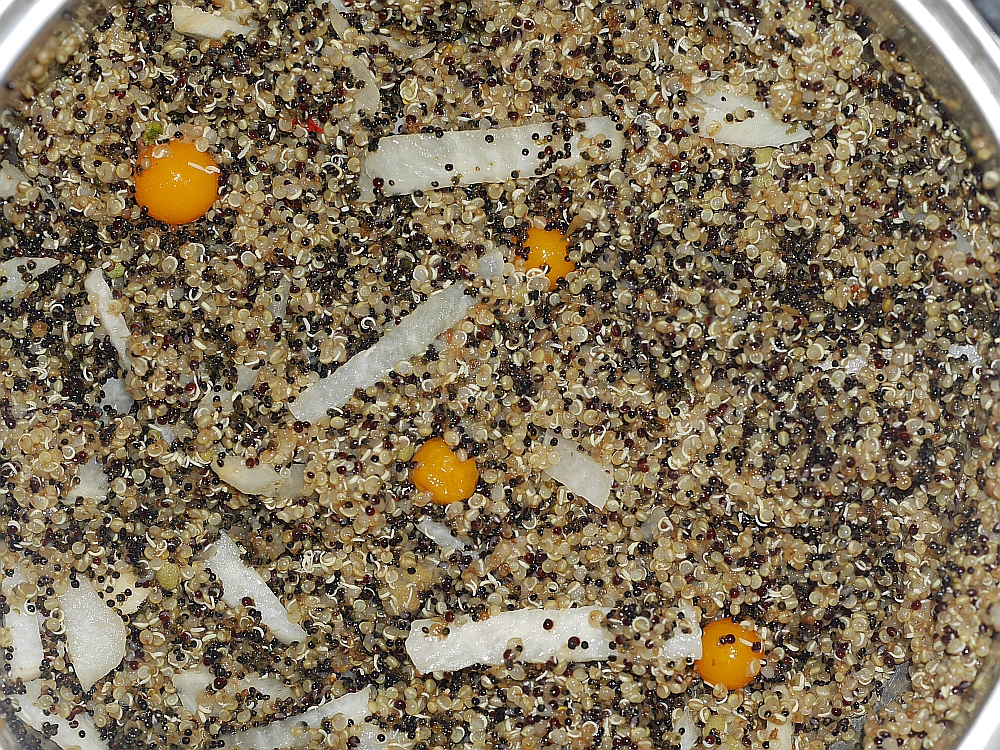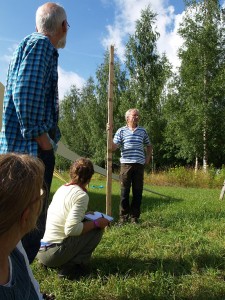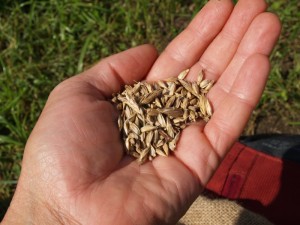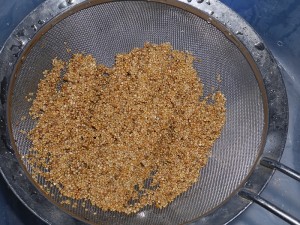Category Archives: grain
Mountaineer Perennial Rye
Although I had no ambitions to work on breeding grains, but along with perennial vegetables, it opened new possibilities for climate-friendly grain production with plants that could potentially produce over several successive seasons, requiring much less energy input, and with their extensive root systems requiring both less fertiliser and irrigation and hence more robust to climate extremes with less erosion.
Reports were that although lower yielding, they were shatter resistant, easily threshed and good for poor soils: it was reported that it tends to live longer on poorer soils (2-4 years on rich soils, 7 to 8 on poorer soils).
I was keen to try Mountaineer in my climate with significantly colder winters than in Oregon and where it had been tested in France and the Netherlands in Europe. I finally got hold of seed in 2013, but didn’t get round to sowing the seed until spring 2015 (in retrospect, I could have autumn sown) and planted 7 plants in June 2015. The plants proved hardy enough and overwintered twice, flowered well but all the plants seemed to be sterile. They died winter 2017-2018. I decided to try again and about 10 new plants were planted in May 2018. Now this autumn I finally got a small yield (pictures). I will offer a few seeds to members of Norwegian Seed Savers (KVANN) through our yearbook in February and plant a larger number of plants in KVANN’s Vegetable Sanctuary at Væres Venner next autumn!
I don’t know what the status is today with Tim Peters’ grain breeding work. He was also working with wheat and sorghum. Let me know if you know!
Around the Year with Quinoa in Malvik
I don’t know how true the story of the variety Dave recounted below in the Adaptive seeds catalogue (Oregon, USA) – I’ve heard different opinions of this: “This is our favorite quinoa because of its unique history and excellent performance here on the Willamette Valley floor. Golden orange seeds. 4-5′ tall plants with seed heads that turn vivid orange when ripe. High yielding when compared to other quinoa grown here in low elevations. Short season. Open seed heads resist late season damp weather. Collected in southern Chile. Named after quinoa collector and advocate David Cusack, who was murdered in Bolivia in 1984. There is anecdotal evidence that he was murdered by “business interests” that felt threatened by the solidarity amongst quinoa growing campesinos. Others believe he was murdered due to his activism and research surrounding the CIA’s role in the overthrow of Chilean president Salvador Allende. All very mysterious.”
Below is a series of pictures taken during the year in Malvik over the years. You may also be interested in the following blog posts about this amazing and nutritious plants:
1. Cleaning Quinoa Seed: http://www.edimentals.com/blog/?p=9083
- Three species quinoa and Jicama salad http://www.edimentals.com/blog/?attachment_id=9925
(this is from a blog post “Jicama-Ahipa a la Henry Quinoa”)
(The most interesting perennial grain crop for cold climates is quinoa’s cousin Good King Henry, Chenopodium bonus-henricus……I have started collecting different accessions of this plant with the idea to select Henry Quinoa, a potential future super-grain for arctic conditions! The common weed Chenopodium album is also surprisingly productive…what it we had selected that as a grain?) - Home grown Quinoa patties: http://www.edimentals.com/blog/?p=9020
Finally, a good reference with lots of recipes is Traditional High Andean Cuisine: Allin Mikuy / Sumak Mikuy http://www.fao.org/3/a-i1466e.pdf
Ivar B. Løne and Mylna
See Mylna’s FB page here https://www.facebook.com/
…and Ivar’s visit to drink tea with the King:
http://idebanken.origo.no/
Jicama-ahipa à la Henry quinoa
I grow this subtropical vegetable in my office, which only gets sunlight for maximum 1 hour a day which isn’t optimal conditions (they are usually grown in open fields), but being a climber originates in forests, so it tolerates shade. I grew it’s brother on-climbing Ahipa (Pachyrhizus ahipa) beside it, but that species didn’t produce much (perhaps it’s more sensitive to light?). I also didn’t think the taste was as good. Both species died down at the end of the year and I harvested the tubers in early January!
Jicama tubers are best eaten raw and are crispy and a little sweet. Being one of the lost crops of the Incas, much more popular in the Americas than in Europe, I served them sliced with a cooked quinoa mix – mixed home grown Quinoa and black-grained Henry quinoa from Good King Henry (Chenopodium bonus-henricus), flavoured with chilis and lemony sanshō seeds (Zanthoxylum piperitum or Japanese pepper).
NB! Both species, Ahipa and Jicama are normally started from seed which I haven’t succeeded in growing myself!
Day Two: I didn’t eat it all yesterday, I needed a bit more, so I cooked up a third species quinoa, Fat Hen quinoa (Meldestokk quinoa), from the seed of one plant of Fat Hen or Lamb’s Quarters (Chenopodium album). It was added to yesterday’s to give a Three species quinoa and jicama salad (two pictures added)
The svedjerug story
Follow the link above for a good video in English where Johan Swärd, winner of the Norwegian Plant Heritage prize, tells the story of Svedjerug (literally Slash and Burn Rye), an old variety which was rescued when a few seeds were found between the floorboards on an old farm in Finnskogen, Norway before being grown out at the Hamar Domkirkeodden Urtehagen (Herb garden at the Hamar Cathedral ruins; see a picture of one of the plants growing there in 1988: https://no.wikisource.org/wiki/Svedjebruk#/media/File:Ryesod.JPG). Johan got his seeds from there and has done great work in popularising it (I can now even buy flour and grain in one of the better supermarkets in Trondheim):
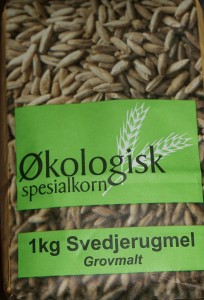

Cleaning quinoa seed
